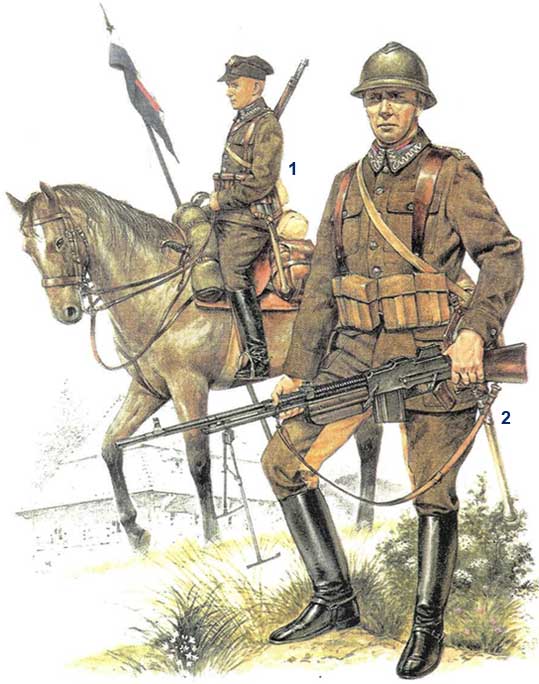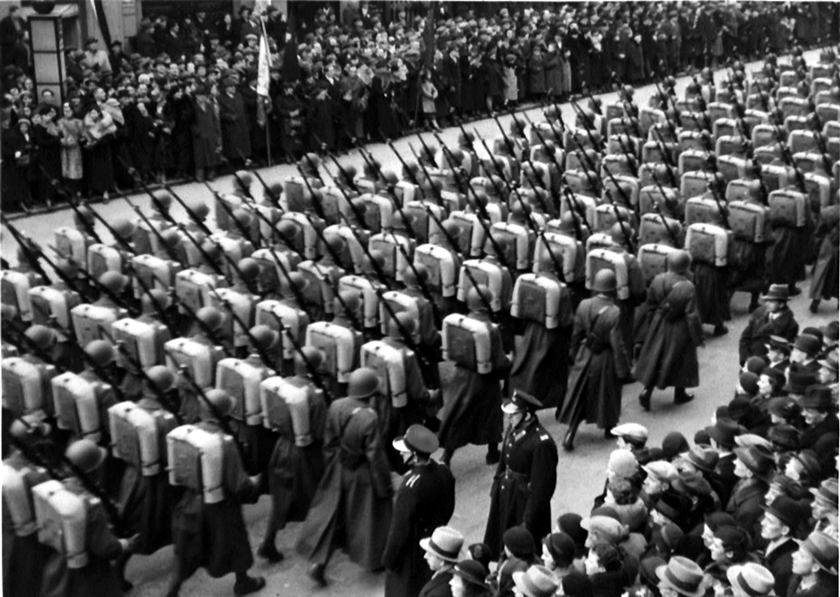
Infantry of the Polish Army 1940

In January 1937, the General Staff presented a document entitled "Expansion of the Infantry", which became the starting point for discussing the changes that awaited the infantry of the Polish Army.
Infantry was by far the most numerous type of weapon in the structures of the Polish Armed Forces, and the defense potential of the state was largely based on it. The percentage of formation in the total number of armed forces of the Second Polish Republic in peacetime reached about 60%, and after the announcement of mobilization will increase to 70%. Nevertheless, in the program of modernization and expansion of the armed forces, the expenditure allocated for this formation amounted to less than 1% of the total amount of funds allocated for this purpose. In the first version of the plan, the implementation of which was designed for 1936-1942, the infantry was assigned an amount of 20 million zlotys. An amendment to the distribution of costs, prepared in 1938, provided for a subsidy of 42 million złoty.
The modest budget that was allocated to the infantry was due to the fact that a significant part of the sums for the modernization of these weapons was included in parallel programs for all ground forces, such as air and anti-tank defense, motorization of commands and services, sappers and communications. Even though infantry has seemingly small budgets compared to artillery, armored weapons or aircraft, it should have been one of the main beneficiaries of the upcoming changes. Therefore, the preparation of further studies to show the current state of the “queen of weapons”, as well as its needs for the coming years, was not abandoned.

The infantry was the most numerous type of armament of the Polish Army, making up about 60% of all armed forces of the Republic of Poland in peacetime.
The starting point
The modernization of the Polish infantry, and especially the adaptation of its organization and weapons to the coming war, is a very broad question. The discussion on this topic was conducted not only in the higher military institutions, but also in the professional press. Realizing that regiments and divisions in the future will face a more numerous and technically superior enemy, on January 8, 1937, representing the General Staff, Lieutenant Colonel Dipl. Stanislav Sadovsky spoke at a meeting of the Committee on Arms and Equipment (KSUS) with a report entitled "Infantry Expansion". This was a contribution to a wider discussion in which the officers of the Infantry Division of the Ministry of War (DepPiech. MSWojsk.) actively participated. In response to the project, from the beginning of 1937, less than a year later, a document was prepared called "Military Needs of the Infantry" (L.dz.125 / mob), which simultaneously discussed the state of this weapon at that time, current needs and plans for the future modernization and expansion.
DepPiech officers who are the authors of the study. at the very beginning, they emphasized that the Polish infantry, in addition to infantry regiments, rifle battalions, battalions of heavy machine guns and related weapons, also deployed a number of additional units as part of the mobilization. Although most of them were not in the axial assumption of modernization, they absorbed the forces and means intended for the “weapons queen”: individual companies of heavy machine guns and related weapons, companies of heavy anti-aircraft machine guns, companies of mortars (chemical), bicycle companies, battalions and marching companies, out-of-band (assistant and security), reserve points.
Such a wide range of activities meant that some attention had to be diverted, and efforts that should have been focused primarily on the three key and above-mentioned types of units were also divided into less important ones. The typical military infantry unit was the regiment, and its miniature or more modest representation was considered the battalion of riflemen. The composition of the infantry regiment in action at the end of the years. 30. and presented by DepPiech. presented in Table. 1. Administratively, the infantry regiment was divided into four main economic units: 3 battalions with their commanders and the so-called non-battalion units under the command of the quartermaster of the regiment. On April 1, 1938, the current position of the quartermaster was replaced by a new one - the second deputy regiment commander for the economic part (part of the duties were assigned to the battalion commanders). The principle of delegating some economic powers down, adopted during the peace period, was supported by DepPieh. because it "enabled commanders to familiarize themselves with the problems of logistic work." It also relieved the regimental commanders, who were often too preoccupied with current administrative rather than training affairs. In the military order, all duties were assumed by the then appointed regimental quartermaster, which provided greater freedom to line officers.
